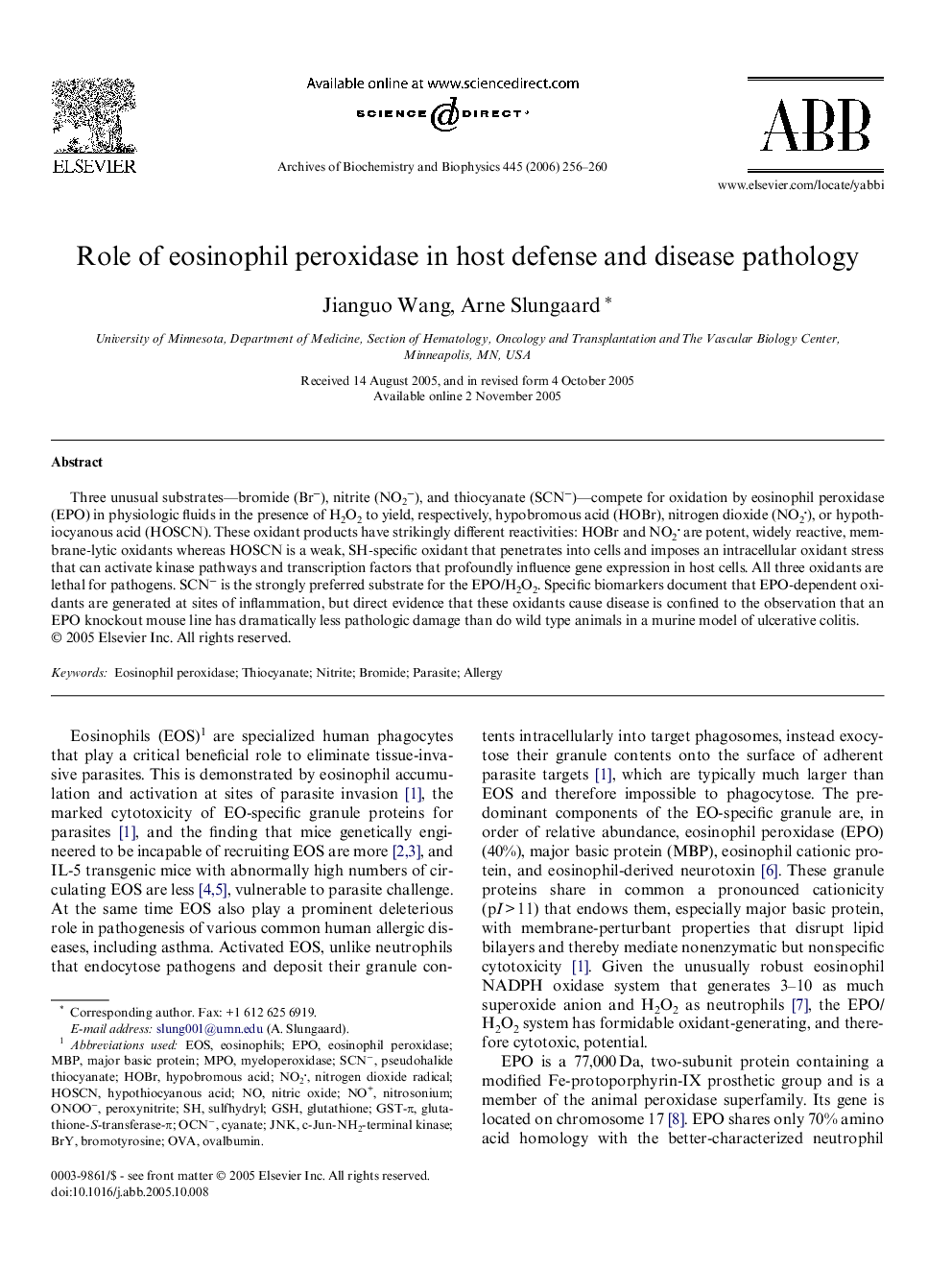| Article ID | Journal | Published Year | Pages | File Type |
|---|---|---|---|---|
| 1927603 | Archives of Biochemistry and Biophysics | 2006 | 5 Pages |
Three unusual substrates—bromide (Br−), nitrite (NO2−), and thiocyanate (SCN−)—compete for oxidation by eosinophil peroxidase (EPO) in physiologic fluids in the presence of H2O2 to yield, respectively, hypobromous acid (HOBr), nitrogen dioxide (NO2), or hypothiocyanous acid (HOSCN). These oxidant products have strikingly different reactivities: HOBr and NO2 are potent, widely reactive, membrane-lytic oxidants whereas HOSCN is a weak, SH-specific oxidant that penetrates into cells and imposes an intracellular oxidant stress that can activate kinase pathways and transcription factors that profoundly influence gene expression in host cells. All three oxidants are lethal for pathogens. SCN− is the strongly preferred substrate for the EPO/H2O2. Specific biomarkers document that EPO-dependent oxidants are generated at sites of inflammation, but direct evidence that these oxidants cause disease is confined to the observation that an EPO knockout mouse line has dramatically less pathologic damage than do wild type animals in a murine model of ulcerative colitis.
